by Ludwig Heinrich Dyck
The Celts, like all other Indo-European peoples, originated on the steppes of Eurasia, from whence they drifted into central Europe. During the first half of the first millennium BC Celtic culture thrived, just as to the south the Greek city-states of Athens and Sparta emerged and flourished. Separately in central Italy, the Etruscan civilization rose to dominate its neighbors, and it was under Etruscan kings that the town of Rome, on the banks of the Tiber, prospered to become a city-state.
[text_ad]
From the fifth century BC onward, the Celts migrated westward from their heartland in southern Germany. The native tribes were unable to withstand their long slashing swords, cavalry and war chariots. From the Alps to Spain and northward to the British Isles, most of western Europe was transformed into a Celtic world. Yet the Celtic tribes, often at odds with each other, never formed a unified Celtic empire.
To the literate “civilized” cultures of Greece and Italy, the Celts were barbarians. The Greeks called them the keltoi, in loose reference to the people north of the Alps. The Romans called the Celtic tribes settled in today’s France and low countries Galli, or Gauls. But the Greeks and the Romans paid the Celts scant attention and neither considered them a serious threat. That perception was put to the test when in the fifth century BC, the wealth of the Mediterranean countries induced the Gauls, led by the Senones, to drift southward into the northern Italian plain.
Their initial migration may have been peaceful, but after BC 400 the lands and cities north of Etruria, belonging to a mosaic of peoples—the Villanovans, the ancient Ligurians, the Golasecans and others—were steadily looted and annexed by the waves of Gallic tribes. Circa BC 396 the northern bulwark of the Etruscan nation, the city of Melpum, fell to the Gauls. In BC 391, large bands of Gauls led by the Senonian chief Brennus advanced into Etruria and threatened the town of Clusium. With no help forthcoming from other members of the politically divided Etruscan cities, Clusium appealed to Rome for help.
The Rome of the early fourth century BC was a powerful city-state held in high renown by its neighbors. In the previous century Rome cast out its Etruscan overlords and subdued the neighboring mountain peoples, the Aequi and Volsci. In BC 405 Rome embarked on the road of the conqueror with its epic and victorious 10-year war against the Etruscan city of Veii.
“Everything Belongs to the Brave.”
 In response to Clusium’s pleas for help, the Roman Senate sent envoys, the sons of Fabius Ambustus, to forewarn the invading Gauls. The envoys came in peace but tempers soon flared. The Gauls stated that they had no quarrels with the Romans, but when asked as to what right they had to the lands of the Etruscans, the Gauls replied “that they carried their right in their weapons … and that everything belonged to the brave.” Matters quickly deteriorated when the envoys joined the Etruscan army in an engagement against the Gauls. During the battle one of the Roman ambassadors ran his spear through a Gallic chieftain.
In response to Clusium’s pleas for help, the Roman Senate sent envoys, the sons of Fabius Ambustus, to forewarn the invading Gauls. The envoys came in peace but tempers soon flared. The Gauls stated that they had no quarrels with the Romans, but when asked as to what right they had to the lands of the Etruscans, the Gauls replied “that they carried their right in their weapons … and that everything belonged to the brave.” Matters quickly deteriorated when the envoys joined the Etruscan army in an engagement against the Gauls. During the battle one of the Roman ambassadors ran his spear through a Gallic chieftain.
The Gauls held off their attack on the Clusines in order to debate the Roman intervention. The younger men advocated a direct attack on Rome. The elders counseled that ambassadors should first be sent. The elders had their way and the Gallic envoys stated their case in front of the Roman Senate; war could be avoided if Rome surrendered the Fabii ambassadors. The validity of the Gallic demands was appreciated by the Senate but not by the people. A public inquiry into the matter found the Fabii more popular than ever so that both Fabii brothers were elected as consular Tribunes for BC 390. To the Gauls this was a slap in the face. The envoys threatened war and returned to their people.
Soon messages from Clusium arrived at Rome: The Gauls had arisen in rage against Rome and with celerity were storming southward. In fear of the Gallic hordes, rural folk took to flight and cities shut their gates. But for the most part, the Gauls spared the countryside of Rome’s neighbors. Everywhere they went, the Gauls shouted that they were going to Rome. Despite all this the Romans remained complacent. Although alarmed by the speed of the Gallic advance, the Roman commanders were sure that they could handle the barbarian rabble. An army was hastily raised by a levy. Less than 11 miles from Rome, the Romans intercepted the Gauls on July 18, BC 390 on the left bank of the Tiber near its confluence with the River Allia.
Tall, Tough, and… Naked?
Whatever their preconceptions, the Romans were shocked at the sight of the Gallic army. Here was no orderly phalanx confronting them, but a 30,000-strong mob of tall, big-boned, fair-skinned men. The Gauls had full mustaches and manes of long hair swept back over their brows. The bulk of their army consisted of light infantry with oval shields and long swords. Large numbers were completely naked, in accordance with religious and social customs, and wore torques, collars of gold, around their necks, as a sort of magical talisman. Others wore trousers, their upper bodies bare or clothed in tunics. Helmets were adorned with horns or crests of animal designs. A few of the chiefs and noble warriors had mail shirts and even the occasional piece of armor for their horses.
The Gauls also had a sizable cavalry contingent armed with spears. In pompous displays, nobles may have arrived at the battle site in chariots but then fought on foot or mounted steeds to lead the cavalry. The howls and wild cries of the Celts, accompanied by blaring of horns and trumpets, resounded over the battlefield as the barbarians worked themselves into a battle frenzy.
Facing the Gallic horde were upward of 15,000 Romans and allies from neighboring Latin cities. The basic Roman military unit was already the “Legio,” a levy “gathered from the clans,” of six thousand warriors blessed by Mars, the Roman god of war. Tactically it relied on the shock value of a phalanx of hoplites (heavy infantry). Reserves were few and there was little cavalry support. The hoplites were ideally armored with helmet, breastplate, and round shield and armed with a thrusting spear and sword. They were drawn from the citizens of Rome. Hoplite tactics were widespread throughout Greece and Etruria and were introduced from Etruria into Rome during the mid-sixth century BC.
Despite the superior numbers of the enemy, the Romans made no attempt to entrench their position. To prevent being outflanked by the Gauls, who had formed a broad front, the Romans greatly extended their wings. The extra men required for this were apparently taken from the Roman center, which was thus weakened. Even so there were insufficient men to make the Roman front equal to that of the Gauls. As a result the Gallic army not only extended beyond the wings of the Romans but, on average, was twice as deep and even more so opposite the Roman center. To the right of the Romans was a small eminence and here the Romans stationed their reserves. They were the weakest troops in the Roman force, probably poorly armed and inexperienced.
Brennus, the Gallic chieftain, suspected that behind the scanty numbers of the enemy lurked some Roman ruse. He feared that the Roman reserves on the hillock would outflank his left wing and strike at his army from the rear while his men were engaged with the legions. As a result Brennus opened the battle by attacking the reserves, with elite, possibly cavalry, detachments from his left wing.
Discipline Overrated
At first, owning to their position on higher ground, the reserves resisted the onslaught. But the brute power of the northern barbarians proved too much. Some of the reserves were driven back into the hills while others were pushed onto the main Roman battle lines. Upon the rest of the Roman army the shouts and clamor of battle on the hill had a disastrous effect. Not only were the Roman right wing and center thrown into confusion but panic spread from those nearest to the reserves, like a domino effect, all across the lines. At this moment the whole Gallic army charged. The ferocity and momentum of the barbarians shattered the Roman phalanx. The Gauls could scarcely believe their good fortune. “None [of the Romans] were slain while actually fighting; they were cut down from behind whilst hindering one another’s flight in a confused, struggling mass,” wrote Livy.
The Roman left wing and possibly all of the center were swept into the Tiber. Here along the banks of the river, there was a great slaughter. The Gallic long swords slashed down upon the Romans like butcher’s cleavers. Many legionaries tried to swim across the waters, but those too wounded, or unable to swim, or too hampered by the weight of their cuirasses were sucked down by the current. From the banks the Gauls peppered the swimmers with missiles. The Romans that reached the other side fled to entrench themselves at the deserted site of Veii.
On the right wing the situation was much better. The majority of its men retreated into the hills from whence they withdrew to Rome. There they fled to the Citadel on the Capitoline Hill but were in such haste that they neglected to close the city gates.
The Gauls, at first dumbstruck at their easy victory, looted the dead and according to custom piled up the enemy weapons in great heaps. They then commenced their march on Rome, which they reached on the day after the battle. Ahead of the main host the cavalry carried out reconnaissance and, to what must have been an astonished Brennus, reported that they had encountered no enemy pickets, that the gates to the city were not shut, and no troops manned the walls. Suspicious of the virtually effortless way they had defeated the reputable might of Rome, the Gauls suspected a trap. Instead of marching right into the undefended city, they bivouacked between Rome and the Anio River and sent further patrols to reconnoiter the walls.
The Galloping of Enemy Cavalry Outside the City Walls
Within the walls of Rome the wailing and lamentations for the fallen at Allia were replaced by a silent terror of the enemy. Throughout the night the yells and galloping of enemy cavalry could be heard outside the city walls. For those inside the city the tension was nearly unbearable. But due to Gallic indecision, no attack came during the night. The citizens decided that owing to the lack of fighting men and inadequacy of its walls, which consisted of little more than an earth rampart (agger) and a ditch, the city was doomed. The only defendable spot was the Citadel on the steep Capitoline Hill and there the Senate and those men of military age, along with their families, sought refuge. The priesthood fled from the city, taking with them the most sacred religious relics. As to the common folk, the plebs, many followed the priests’ example and streamed out of the city in disorganized mobs to seek safety in the countryside or within neighboring cities.
About three days after the battle at the Allia, the Gauls entered the city unopposed. Although they had carried out nightly cavalry reconnaissance, they could not have been very thorough; the Gauls were surprised at the large number of people who, along with their possessions, had already slipped through their grasp. The Gauls stationed a squad of troops around the Capitoline Hill and then let loose their wrath on those that remained in the city or were still in the process of fleeing. For the next few days and nights, the Romans on Capitoline Hill watched helplessly as below them their cherished city was torched by the Gauls. From out of the roaring inferno resounded the shouts of the barbarians and the cries of citizens put to the sword.
Storming the Citadel
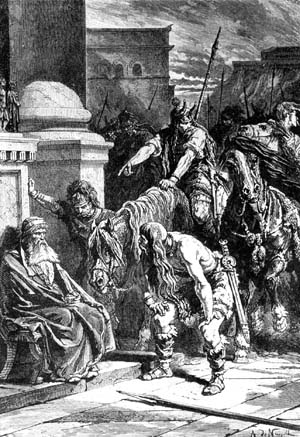 When nothing survived amid the ashes and ruins of the city, the Gauls stormed the Citadel. In stark contrast to the battle of Allia, the Romans now put up a stout defense. The Gauls came on with a battle-shout and locked their shields above their heads to protect themselves against missile fire. The Romans let the enemy advance about halfway up the hill, up to where the ground was steepest, and then charged. Because of the steep gradient the Romans proved unstoppable and completely scattered the Gauls.
When nothing survived amid the ashes and ruins of the city, the Gauls stormed the Citadel. In stark contrast to the battle of Allia, the Romans now put up a stout defense. The Gauls came on with a battle-shout and locked their shields above their heads to protect themselves against missile fire. The Romans let the enemy advance about halfway up the hill, up to where the ground was steepest, and then charged. Because of the steep gradient the Romans proved unstoppable and completely scattered the Gauls.
Wisely deducing that any further attempts to take the Citadel would be fruitless and only result in more Gallic casualties, and that in any event time was on their side, the Gauls surrounded the Capitol in a blockade. The problem was how to feed their own troops, because the fire had burned the corn supplies in the city while the surrounding fields had been stripped bare by those citizens who had fled. So the Gauls decided that half of their numbers would scour the countryside for provisions while the other half continued the siege.
At Rome, a period of relative inactivity set in with the Romans secure within their hilltop fortification while the besiegers continued their investment. Elsewhere there was more activity. At Ardea the renowned Roman general Marcus Furius Camilus, who in BC 396 had captured and destroyed the Etruscan city of Veii, rallied the citizens against Gallic raiding parties. Not far from Ardea, Camilus and his levy of Ardeans surprised and slaughtered a large throng of Gauls. Similarly the Roman troops still encamped at Veii fought against various Etruscan bands who, sensing easy spoils, made forays into Roman territory. The Roman army at Veii was steadily swelled by volunteers from the rest of Latium. All that was needed was a capable leader. It turned out to be Camilus. With the consent of the Roman Senate, and notified by a secret messenger, Camilus was nominated Dictator by order of the people.
Gauls Foiled by Fowl
According to tradition, the Gauls meanwhile attempted to infiltrate the Capitoline Hill by stealth. At night, a small party scaled the hill near the Temple of Carmentis. The climb was precarious but the party gained the summit and completely eluded the Roman sentinels. The Gauls did not even wake the guard dogs. Fortunately for the Romans, a flock of sacred geese, near the temple of Juno, were in the vicinity of the Gallic infiltration. The geese put up such a racket that the Roman guard was finally roused. Led by a certain Marcus Manilus Capitolinus, a veteran soldier, those Gauls who had reached the summit were flung back over the cliff. Manilus confronted two of the enemy. His sword sliced away the right hand of one Gaul, sending a battle ax flying. Manilus smashed his shield into the face of the other, who tumbled down the cliff. The other Gauls, who still clung to the rocks, were dislodged with a volley of javelins and stones. The result of this fiasco was that stricter watch was kept by the Romans. The Gauls, too, tightened their security around the hill for they had come to realize that messages were passing between Veii and Rome.
Despite their valiant defense of the Capitol, the Roman condition was far from desirable. Seven months of blockade had reduced them to famine. The Gauls also suffered from malnutrition, along with severe outbreaks of malaria, and died in such great numbers that efforts were no longer made to bury the dead. The corpses were simply piled into heaps and burned.
Finally, hunger so gnawed at the defenders of the Capitol that they gave up any hope of being relieved by Camilus. All that was left was to sue for a peace. A conference between the consular Tribune Q. Sulpicious Longus and the Gallic chief Brennus resulted in a ransom of 1,000 pounds of gold to be paid by the Romans for the peaceful withdrawal of the Gauls. When it was time to weigh the gold the Gauls produced false weights. The Romans complained, but to no avail, for Brennus threw his own sword on the scales and haughtily proclaimed, “Woe to the vanquished.”
Fanciful Revisionism By Modern Scholars?
What happened next is disputed. Livy wrote that Camilus and his army now appeared on the scene. He at once ordered the Gauls to leave the gold and to march away from the city. When they refused to do so, a chaotic battle erupted as Romans and Gauls fought within the streets and alleys of the ruined city. The end was that the famished and disease-stricken Gauls were easily routed and driven out of the city. At the eighth milestone on the road to Gabii, the Gauls rallied but were again defeated by Camilus’s pursuing force. Plutarch mirrors Livy’s tale, except that he maintains the skirmish in the city resulted in few Gallic casualties and that the Gauls retreated in good order until their defeat on the road to Gabii. In contrast to Livy and Plutarch, Polybius makes no mention of Roman heroics and says the Gauls raised the siege because their own lands were threatened by the Veneti. Diodorus gives us yet another account in which the Gauls left Rome of their own free will after receiving the gold. Later they were defeated on two separate occasions, by Camilus at the town of Veascium and by the Caeretans in Sabine territory.
Most historians consider Camilus’s defeat of the Gauls to be little more than a fanciful revisionism by classical historians to conceal the true scale of the disaster at the hands of mere “barbarians.” But there is probably a bit of truth in the classical accounts. Perhaps the Gauls accepted the ransom because of pestilence and malnutrition within their own ranks, and because of rumors of the Veneti invasion and a possible large gathering of fresh Roman forces in the countryside. On their way home the Gauls no doubt spread into smaller bands to ease their living off the land. Many of these bands might well have been ambushed by Romans and other tribes and with them part of the ransom gold was lost.
Whatever the truth of the Gallic departure, the Romans ever after called their defeat at the Allia the “black day” (“dies ater”), and the sack of their city left a memorable impression on them. Clearly the army needed improvement and the city defenses strengthening to prevent future disasters at the hands of the Gauls.
A Military Overhaul
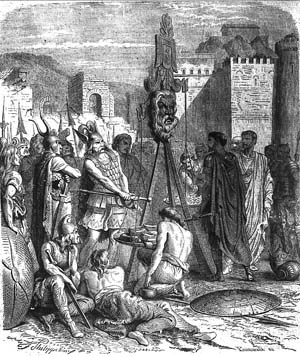 The first of these problems was addressed by Camilus, who begun a series of army reforms that were further enhanced during the Samnite wars of the late fourth century BC. The easily disordered phalanx was abandoned in favor of the tight, independent unit of the maniple. This formation was 60 or 120 men strong, placed at intervals in a line, and allowed greater elasticity in both attack and defense. Volleys of javelins were used to prepare the way for combat with the short sword. The round shield was replaced by the more familiar Samnite scumtum, a large semi-cylindrical four-cornered shield. Alongside the new army, Rome’s agger was raised and backed by a 12-foot-thick and 24-foot-high solid stone wall circling the whole city for a distance of over five miles. Greek contractors may have been called in to build the wall, the labor possibly being done by the Roman army and Veientine captives.
The first of these problems was addressed by Camilus, who begun a series of army reforms that were further enhanced during the Samnite wars of the late fourth century BC. The easily disordered phalanx was abandoned in favor of the tight, independent unit of the maniple. This formation was 60 or 120 men strong, placed at intervals in a line, and allowed greater elasticity in both attack and defense. Volleys of javelins were used to prepare the way for combat with the short sword. The round shield was replaced by the more familiar Samnite scumtum, a large semi-cylindrical four-cornered shield. Alongside the new army, Rome’s agger was raised and backed by a 12-foot-thick and 24-foot-high solid stone wall circling the whole city for a distance of over five miles. Greek contractors may have been called in to build the wall, the labor possibly being done by the Roman army and Veientine captives.
The new army was not tested against the Gauls for a long time. Their defeat at the Allia so discredited Rome in the eyes of her neighbors that the loyalty of her Latin allies began to waver, while erstwhile enemies, the Aequi, Volsci, and Etruscans, reopened old wars. Fortunately for the Romans, barbarian raids into peninsular Italy were sporadic as the Gauls concentrated on consolidating their hold on northern Italy. Twice, in Gallic forays of BC 360 and again in BC 349, battle was avoided when the combatants lost their nerve. On the former occasion the Romans sought safety behind their walls, while on the latter it was the Gauls who withdrew before a force of Romans and Latins. In BC 331, the Gallic Sennones concluded a peace with Rome. For the Celts the next century would mark their martial zenith. Although Rome had proved a formidable buffer, Celtic warbands crushed Etruscan power north of the Apennines, and the north Italian plain became known as Gallia Cisalpina. Other tribes pushed into Greece, Russia, and Asia Minor.
Fool Us Once…
Not until BC 236, with raids by the Boii, did Gallic inroads again become problematic to the Romans. In BC 225 a combined horde of Cisalpine and Transalpine Gauls poured into Etruria in what was heretofore the largest Gallic invasion of Italy. But in the interval of nearly two centuries since their meeting at the Allia, Rome had grown from a city-state into an Empire. Her army and people had been hardened by successful wars against Latins, Etruscans, Samnites, Greeks, and Carthaginians. With her vast resources, Rome levied an army more than twice the size of the Gallic host. The Gauls were outmaneuvered by converging Roman armies of at least 130,000 soldiers. At the battle of Telemon the barbarians made a brave stand but were cut down to a man.
In retrospect, the battle of the Allia and the sack of Rome were a hollow victory for the Gauls. The Romans learned from their mistakes and emerged defiant and stronger than before. By the aftermath of Telemon, Rome was in a position to take the war to the barbarians. Through shrewd diplomacy and war, Rome slowly chipped away at the Gallic domains until in the mid-first century BC Julius Gaius Caesar completed the conquest of Gaul. For the Gauls, the long-term effect of their conflict with the Romans proved to be the downfall of their supremacy over much of Europe.
But if the Romans emerged victorious in the end, the sack of their city had burned into every Roman heart an everlasting fear and apprehension of the barbarians. That fear proved justified. Although for eight hundred years after the Gallic sack, Rome would remain unconquered, her people would once again be put to the fire and sword by a barbarian peoples, the Germanic Visigoths, in 410 ad.
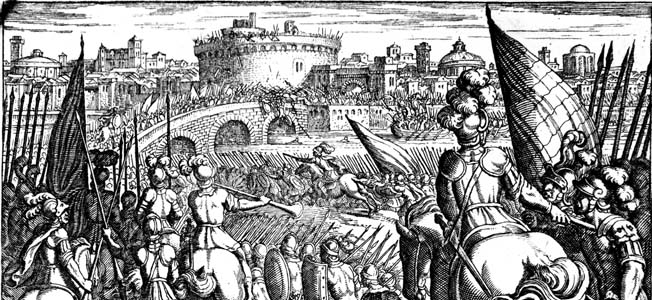
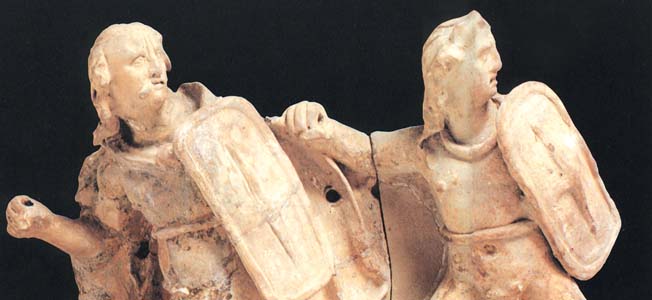
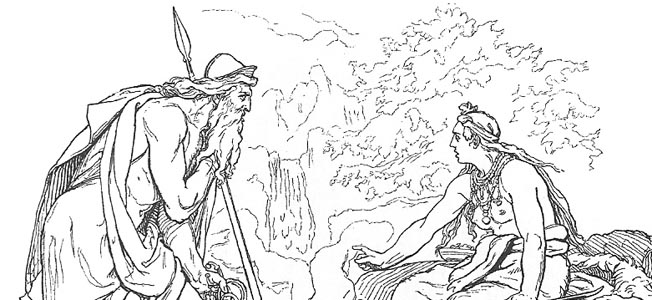
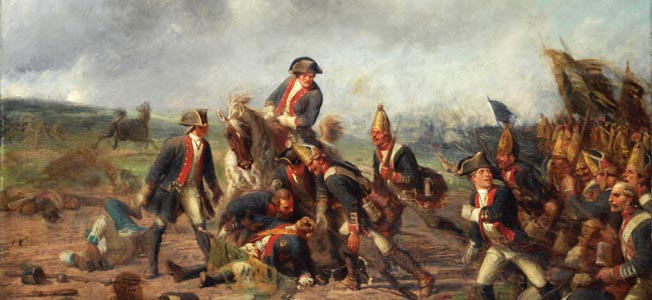
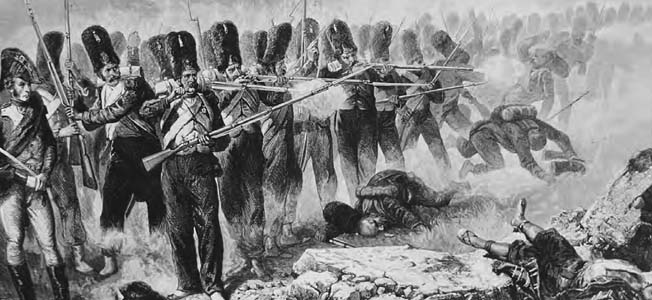
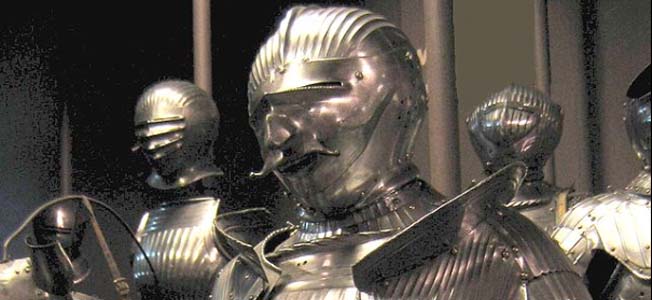
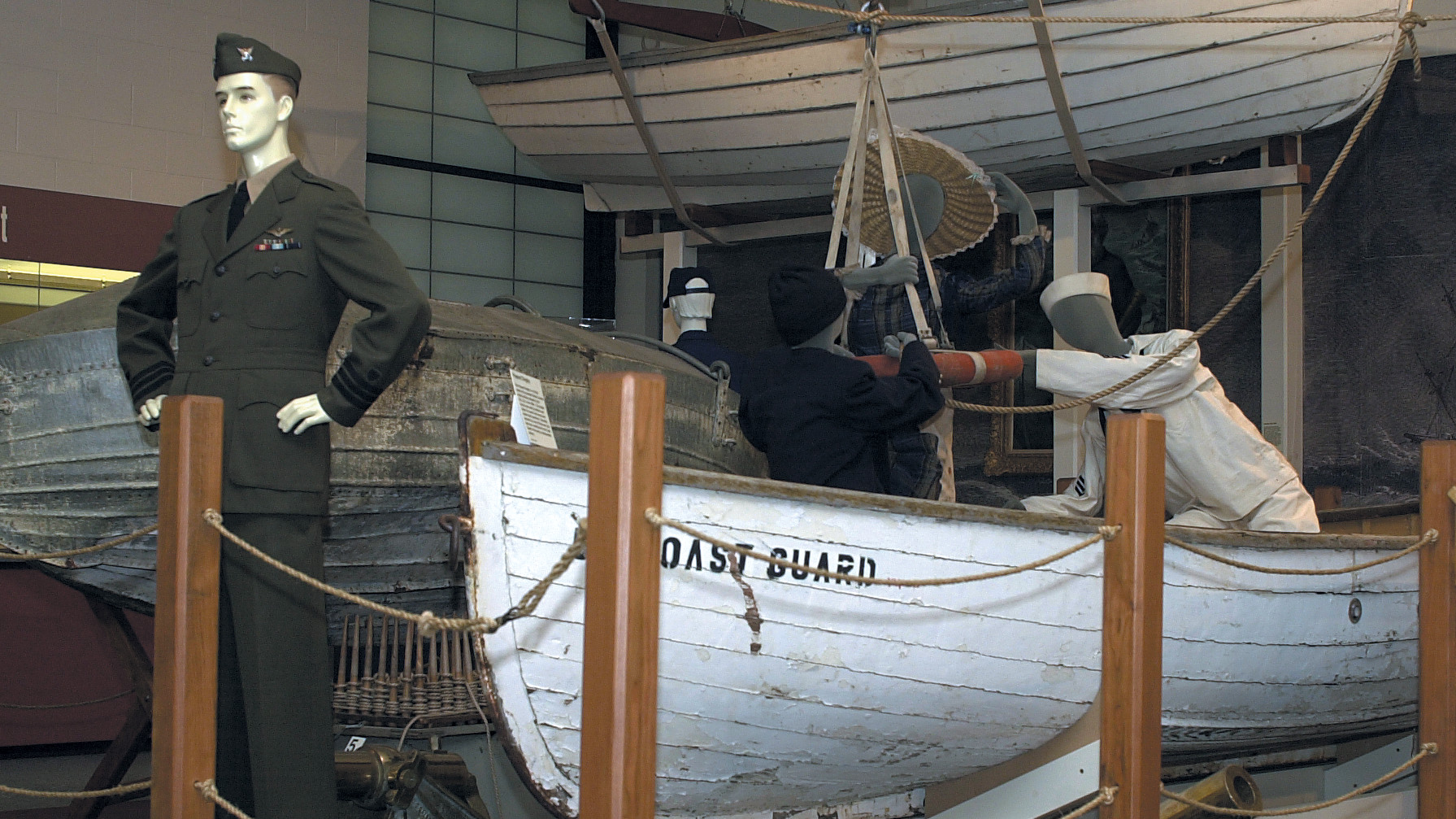
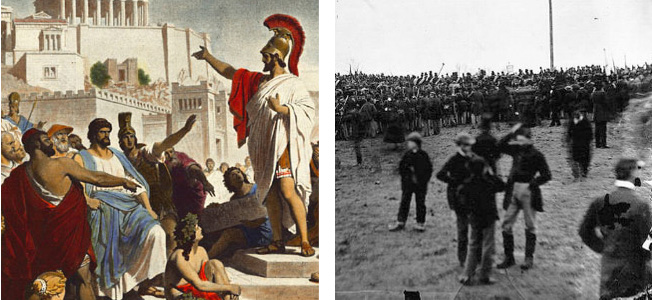
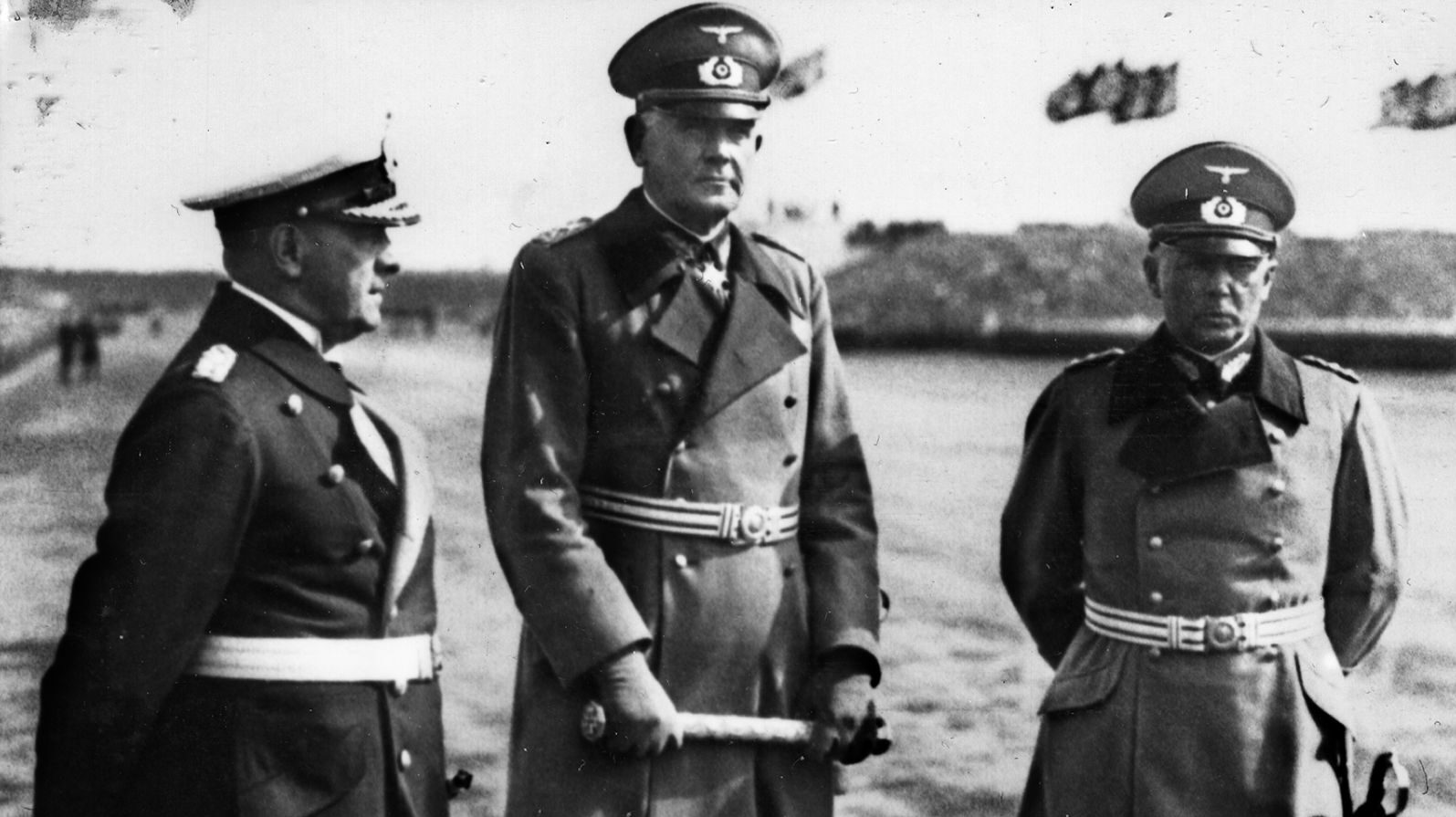
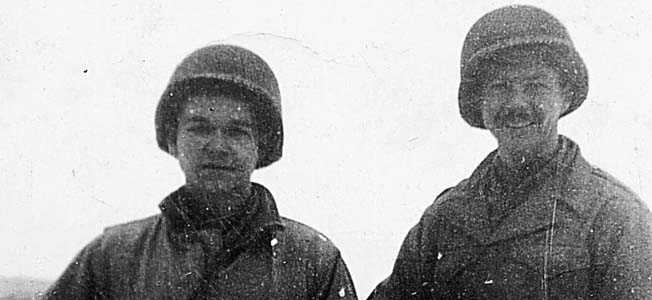
Join The Conversation
Comments
View All Comments